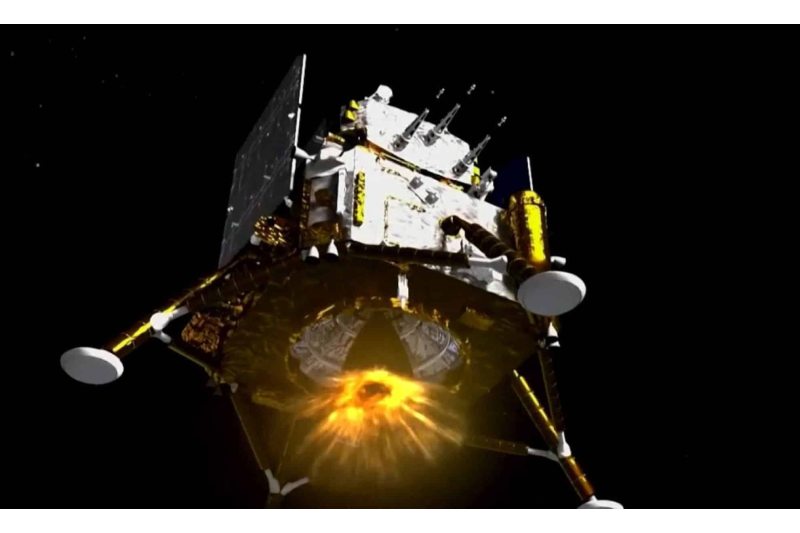After launching on May 3, the Chinese Chang’e-6 mission is almost ready to finish its most significant phase. The descent module is scheduled to detach from the main spacecraft and initiate landing in the Apollo crater, which is situated on the lunar surface farthest from Earth, during the night of Saturday and Sunday.
On May 28, the sun has already started to rise above this geological formation. Consequently, even though it will be two in the morning in the Ukraine and Sunday morning on May 2 in the flight control center in China, the landing will take place with good visibility.
If all goes according to plan, the module will start inspecting all of its systems as soon as it lands. Following that, it will start to drill and choose materials from the Moon’s surface. Chang’e-6 should be able to handle up to 2 kilogram of them.
The lander is expected to remain on the Moon’s far side for 48 hours in total. Following that, the procedure for bringing it back to Earth will start, along with the samples that were gathered. The primary objective of the mission will be completed when the module docks back at the surface. This is anticipated to need a maximum of two additional days. The journey back home will then start.
What the scientists are interested in learning
The primary characteristic of the Chang’e-6 mission is not simply that it is intended to land on the Moon’s far side, but rather that it will occur within the South Pole-Aitken basin. It is among the Solar System’s biggest impact-originated geological formations. It was created by a collision with a massive body billions of years ago.
The asymmetry of the Moon’s hemispheres is one of the planet’s greatest mysteries, and scientists hope that the samples they have gathered will help explain it. If there are many oceans on the side that is easily visible from Earth, then the other side has very few seas. There are considerably greater differences in the surface’s elemental and mineral composition.
Scientists believe that volcanic activity, which started as a result of the impact that created the South Pole-Aitken basin, is the cause of all of this. Furthermore, the samples Chang ‘e-6 will bring to Earth ought to aid in the comprehension of this problem.
The lander also has a number of different research devices on board. These are the French DORN gas detection equipment and the Swedish Institute of Space Physics’ NILS negatively charged ion detector. A little rover and an Italian laser beam reflector are also present.
